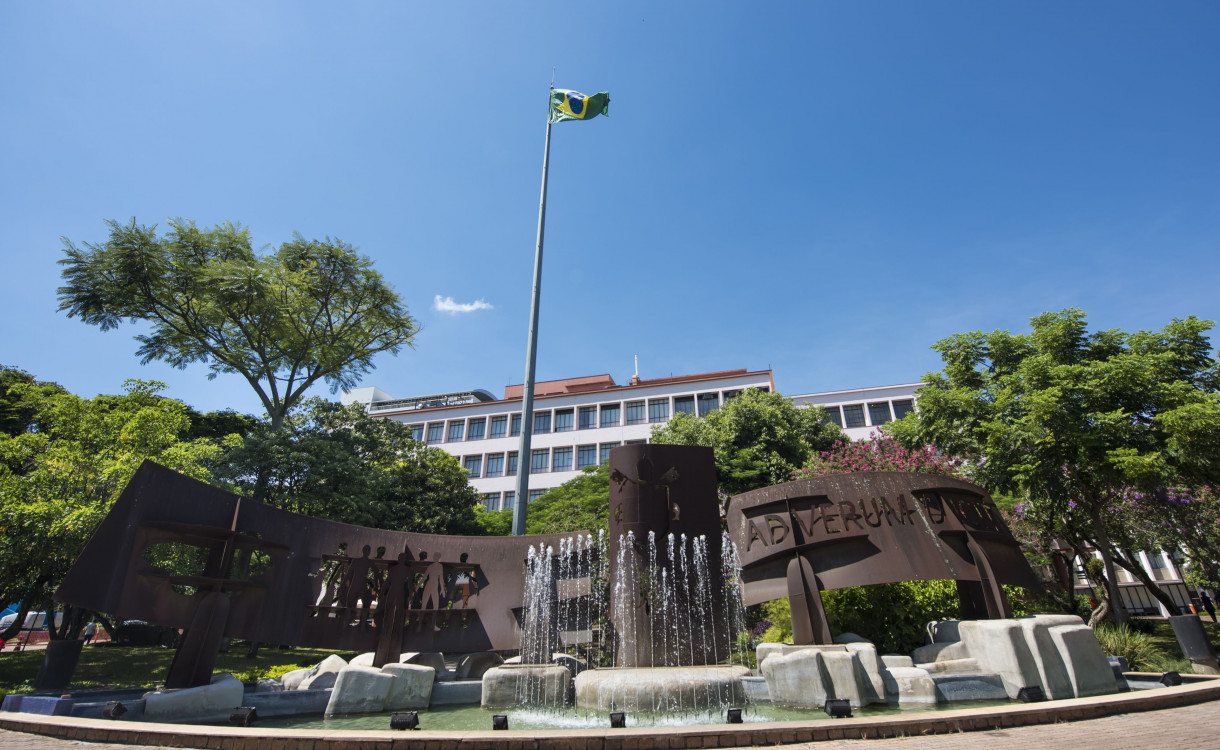70 years alive and kicking
The seven decades of history of the University are being revisited as the institution presents its plans for the future
The first Marist university of the world was born out of the persistence of a man. Br. Afonso (Charles Herbaux), a religious man with an entrepreneurial and visionary spirit, was responsible for a very important educational enterprise in the south of Brazil: the establishment of PUCRS, which began to take shape in the 1930s, with the aid of his faithful collaborators.
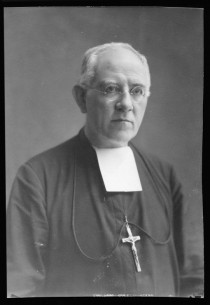
Brother Afonso, founder of the University
In 1927, Br. Afonso took office as the principal of Colégio Rosário and founded the Instituto Superior de Comércio. This would pave the way for the construction of what would later be the institution we now know as PUCRS. The institution, then, became a reference in the training of accounting specialists. Following students’ requests to continue their studies at the college level, but being unable to do so because there were no such institutions to provide training at this level, Br. Afonso created the Undergraduate Degree in Business Administration and Finance, in Mar 1931, for 9 students. Three years later, the course would be embraced by the School of Political and Economic Sciences.
NEW SCHOOLS
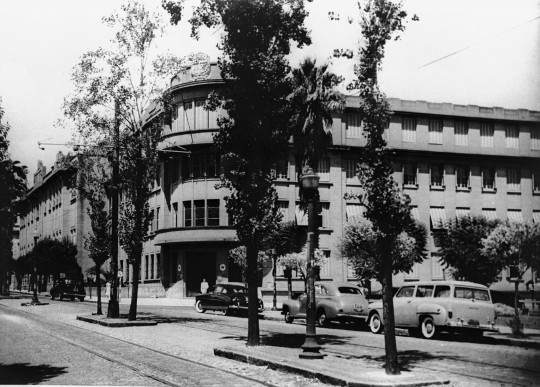
Building at Praça Dom Sebastião serving as home to PUCRS from 1944 to 1967
The seed was sown. And so, just like the implementation of the first undergraduate degree served to meet a social need, the path taken by the Marists, headed by the visionary attitude of Br. Afonso, was filled with successes. New social demands produced new responses. As a consequence, they gave birth to the School of Philosophy, Sciences and Letters (1940), the School of Social Work (1945) and the School of Law (1947). These four Schools and the help of Br. Faustino João and professors Eloy José da Rocha, Elpídio Ferreira Paes, Salomão Pires Abrahão, Francisco Juruena, Br. José Otão and Antônio César Alves, among others, were very important for the institution. They justified the request made by the União Sul-Brasileira de Educação e Ensino, a civil entity of the Marist Brothers, to the Ministry of Education to grant the institution the status of university.
As the world was heaving a sigh of relief after the end of WW2, in 1947, Br. Afonso and Br. Faustino João joined forces in an effort to build a university. The Schools congregated and formed the Catholic University of Rio Grande do Sul by Decree No. 25,794, dated Nov 9, 1948, signed by the president Eurico Gaspar Dutra. On Dec 8, 1948, the Archbishop of Porto Alegre and Chancellor of the University, Dom Vicente Scherer, swore in the president Armando Câmara and Senior Vice President Br. José Otão for the period 1948 – 1951. However, the status of Pontifical would be granted in 1950.
TIMES OF DEVELOPMENT
The successful path taken by the institution thus far has been marked by administrative and financial problems, too. A feeling of unease took over the members of the Higher Administration as the need for university-level education started taking hold in the south of Brazil. That was such a unique achievement for Marcelino Champagnat’s educational undertakings.
But nothing destroyed the excitement and faith of the brothers. The joy experienced in the new achievements did not underplay the efforts that were made to award the institution the title of pontifical – which is to be granted to institutions that follow the Catholic Church’s philosophical orientation and doctrine.
PONTIFICAL
Relying on the support of Archbishop Dom Vicente Scherer, Pope Pius XII signed the decree that awarded this title to Catholic Schools. On Mar 7, 1951, PUCRS became an official Pontifical University, the third in the country. This distinction recognizes the contribution of a university to the good values of church in higher education.
The following years saw the creation of projects to implement new Schools and programs geared towards not only education but also the community, sciences, arts and environmental preservation. A major undertaking that would change the higher education scenario of Porto Alegre started to take shape.
The Campus is born
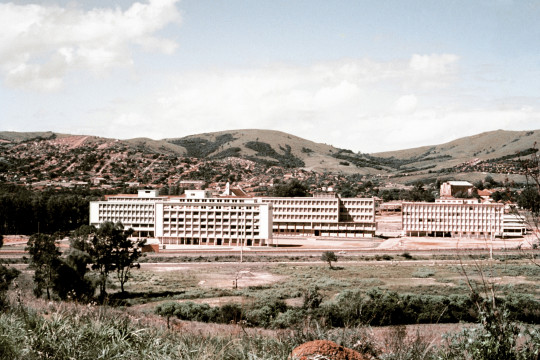
1968: first buildings on the new Campus
In 1954, Br. José Otão took office as president (1954-1978) of a university that was small but still full of problems: both in terms of structure, facilities, faculty retention and qualification. By employing clear and straightforward methods, he made the structure more solid, reaffirmed the strength of the sponsor and decided to relocate the university from downtown Porto Alegre to the Main Campus, in an area that belonged to the Marist Brothers, to be shared with Colégio Champagnat, in Partenon.
In Mar 1957, the School of Dentistry opened its doors and, 11 years later, the president of the country Mr Costa e Silva opened the Cidade Universitária. Schools started transferring to the Main Campus in 1960. The first students had problems with transportation and with the ongoing construction. In Apr 1962, the buildings that would be home to the School of Dentistry and School of Engineering were opened. As the buildings were being finished, other schools moved in.
The following decades saw the growth and consolidation of PUCRS in a peaceful setting surrounded by nature. The image of the University as an institution devoted to education and research was consolidated. It is featured among the best universities in the country, a reference in several academic areas and recognized in the five continents.
A university hospital |
Following the creation of the School of Medicine, in 1970, the institution saw the need to build a university hospital to give undergraduate and graduate students the chance to do practicum work. After an assessment of needs and the implementation of an urban master plan, the construction works began in 1971 and the São Lucas Hospital (HSL) officially opened in Oct 1976. This was the first project of the Marist Brothers Institute that became a reality. At the end of 1988, PUCRS opened the Clinical Center, an innovative center that brought HSL and medical offices together. It is worth noting that the medical doctors serve as faculty members of the university, too.
|
Renovation for the future
Over the course of the history of the institution, 1978 was marked by the election of John Paul II as the Pope, being the third Pope in three months and by the miracle of Medicine: the first test-tube baby in the world. Argentina lifted the World Cup trophy and the people in the nightclubs would go crazy to the moves of John Travolta. In that year, PUCRS took an important step forward to achieve the excellence it has managed to maintain up until today.
As President, Br. Norberto Rauch kept a firm grip on the institution, and the University began to take a safe path to accomplishing major projects for the future and which are now a reality. Relying on an incredible innovative ability, Rauch accomplished some remarkable achievements the people of Rio Grande do Sul are proud of: Tecnopuc, a reference as a Science and Technology Park; the Museum of Science and Technology, known for its interactive experiments in different areas; the Sports Park, for being home to a wide variety of sports; the new Main Library, one of the largest ones in Latin America, and other areas devoted for the production of knowledge.
MIL PARA 2000
In his 26 years serving as president (1978-2004), PUCRS took a qualitative leap. Another distinctive factor was the focus on faculty, researchers and staff. After facing the financial imbalance during the military dictatorship, the Renovation for the future institution managed to increase the pay of its employees, offer benefits and move forward to a deeper transformation. A faculty development program took effect in the 1980s. It grew out of proportion and, in 1991, the challenge Mil para Dois Mil was posed. The institution planned to have 1,000 faculty members with a Master’s or PhDs by the year 2000. Rauch revisits the success of the plan in the book Trajetória de um período: 1978-2004. “The response of the faculty was great. We went way above the target that was set before the deadline.”
CONTEMPORARY WORLD
On the verge of the turn of the century, collective efforts were geared towards the commitment to working on the development of people and not only professionals. People who would be capable of observing the principles and values that are essential to a just and fraternal society: that was the motto of the founder of the Marist Institute, Saint Marcellin Champagnat.
In 2004, in view of the enormous challenges posed by the new millennium and with an eye to the mission of remaining faithful to the principles of an educational institution, Br. Joaquim Clotet took office as president (2004-2016) and began to sort out priorities as the institution was then into the contemporary world. His mandate was anchored in four pillars: quality; entrepreneurship; integration between teaching, research and extension; and relationship with society.
A robust university is being conducted by the hands of the president Br. Evilázio Teixeira, as the institution celebrates its 70th anniversary. That is a legacy of the presidents who preceded him and who planted the seeds of the dreams of the university’s founders. In 2017, he implemented the movement PUCRS 360° – University in transformation, in an effort to earn students more autonomy in their academic career, new directions for a different academic experience and more recreational and quiet study areas around Campus, such as the Rua da Cultura (Cultura Square).
PUCRS in numbers |
■ Undergraduate programs: 55, with different majors being offered ■ Certificate programs: 88 in progress ■ Master’s: 24 ■ Doctorate: 22 ■ Students (undergraduate and graduate) in 2018/1: 27,349 ■ Undergraduate alumni by 2017/2: 166,807 SOURCE: PROGRAD, PROPESQ AND EDUCON
|
Tecnopuc, 15 years of innovation
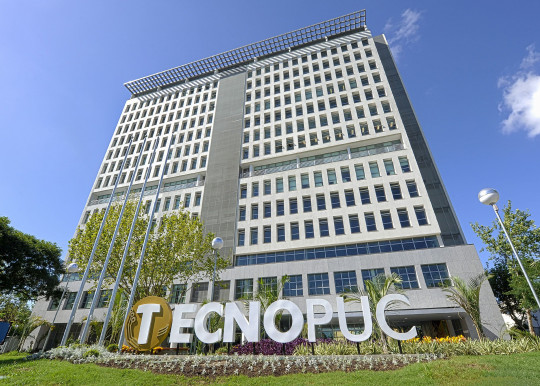
Park is home to 150 companies and employs 6,500 people
As the Science and Technology Park (Tecnopuc) celebrates its 15th anniversary, an ambitious goal has been set: to attract and generate 1,000 new startups in ten years. This goal has been stated in the strategic plan of the area of Innovation and Development and mirrors a trend that is now a reality in the most relevant ecosystems of innovation around the globe.
The Park is home to more than 150 organizations, including global giants, national companies, institutes and research centers that foster several mechanisms of business generations. Over the period of 15 years, more than 200 startups have Park is home to 150 companies and employs 6,500 people graduated. The newest member is the US multinational Oracle, which began its operations in October.
The Park employs more than 6,500 professionals in an area designed to create synergy between the companies and the University. It also has collaboration agreements and partnerships with more than 150 countries. Since it was founded, in 2003, its area has increased four times in size, from 20,000 m2 to 90,000 m2.
As one of the Latin American references in ecosystems of innovation, it is the most awarded and widely acclaimed Science and Technology Park in Brazil.
University gains momentum with Capes/Print
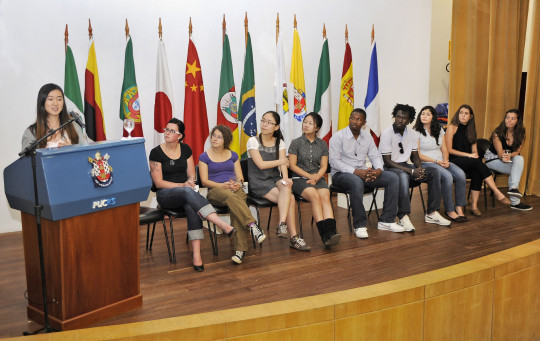
Goal: to increase the number of international students
PUCRS is nationally and internationally recognized for the quality of teaching and the scientific, technological and social relevance of the research carried out by its academic community. It is featured as one of the best institutions from Latin America in international rankings. It has agreements with universities in Asia, Africa, Europe and the Americas for incoming and outgoing academic mobility and partnerships.
In Aug 2018, PUCRS and other institutions were awarded with a grant known as Institutional Program of Internationalization (Capes/Print) by the Brazilian Federal Agency for Evaluation and Support of Graduate-level Education (Capes). The funds will be used to invest in the continuous internationalization of the curriculum, both at the undergraduate and graduate level. This is a strategy to be used to prepare students to get into an international and multicultural professional world.
Research that transforms
Over the course of the last 20 years, PUCRS expanded its scope of operation in research and earned its graduate programs an international level of excellence. It has prioritized the production of knowledge and understood that the role it is meant to fulfil goes beyond providing professional training: it also includes making changes to society, through its strategic positioning of innovation and development.
PUCRS is keen to making advancements in research, with the challenges of an even more globalized world. The idea is to become an international environment by consolidating international partnerships, welcoming researchers from other countries and a growing number of international students.
Another challenge is to work closely with the ecosystem of innovation in order to prepare students for a market that needs a variety of skills incluidng relationship, leadership and entrepreneurship. These two movements have produced the Internationalization Plan, which will guide the actions of the University in every dimension in the next four years. It has also produced the Innovation Policy, which leads to a number of possibilities for an entrepreneurial culture and generation of businesses in the academic environment.
High standards |
■Graduate Programs: 24 – 11 of which have been awarded grades 6 and 7 by the Ministry of Education, which consequently earned them an international level of excellence ■Ongoing research projects: 1,700, 180 of which involving international partners ■ International agreements: 233 ■ Researchers: around 350 ■ Productivity grants: 123 CNPq researchers, which is an indicator of excellence in research ■ Students: around 2,000 ■ Undergraduate research: 611 grants to get undergraduate students involved in research ■ Research groups: 354 active groups. This earns PUCRS the top position in Brazil among public and private institutions, as per the 2016 census ■ Research Institutes: 4 (IMA, IPR, IGG and BraIns) ■ Research Centers: 17 ■ Multidisciplinary Research Groups: around 60 ■ Laboratories: 120 |
A Campus for health care services
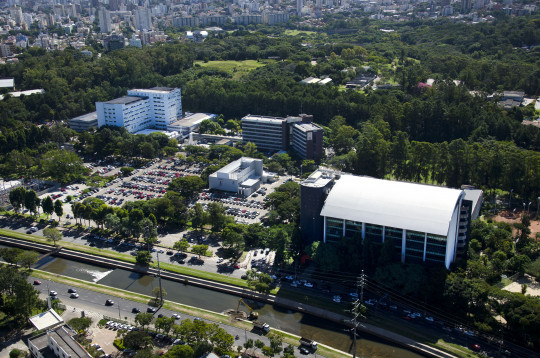
Inter-institutional and multidisciplinary structures
Relying on funds from the State of Rio Grande do Sul, PUCRS is investing in an innovative initiative in the South of Brazil geared towards education and health care assistance and promotion, in an integrated and multidisciplinary way. This campus congregates the Schools of Health Sciences and Medicine of PUCRS, and consist of six dedicated facilities: the Brain Institute of Rio Grande do Sul (BraIns), the São Lucas Hospital, the Sports Park, the Rehabilitation Center, the Clinical Center and the Healthcenter Care, a center that is under construction and which will provide unique health care and wellness services. All of that is used to bring research, teaching and assistance together with an eye to the promotion and protection of the health of the population. The University is increasingly giving the right value to these structures by remodeling them, expanding them and building new facilities. This also includes new equipment, customer service training and development actions.
The Senior Vice President Dr Jaderson Costa da Costa claims that the Health Campus is interinstitutional and multidisciplinary. One of its components, BraIns provides support to all eight schools of PUCRS as it welcomes undergraduate students as well as graduate and undergraduate researchers to learn more about the new technologies. The Institute embraces several academic areas, such as Modern Languages, Theology and Philosophy as some research groups are working on cross-sectional research. As the remodeling works of the institute began in September, the future might hold other opportunities.
Expansion of BraIns
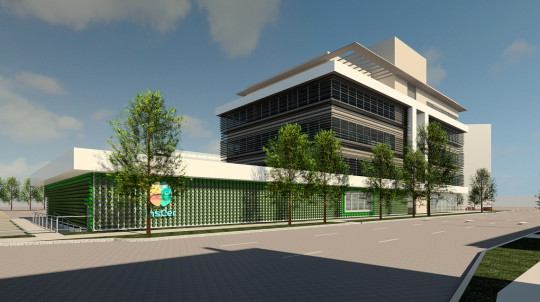
New building will be three times as large and will be ready in 2020
The original project of construction of BraIns was divided in two parts. Relying on funds from Finep, its current 2,549 m2 will be expanded to 9,335 m2 and is expected to be completed in 2020. It will feature new laboratories, machines, offices, cutting-edge equipment for exams and other services. “An area will be dedicated to clinical trial volunteers, such as Alzheimer’s or Parkinson’s patients. It will also be used by guardians of kids with learning, reading or developmental disorders”, says Jaderson Costa da Costa.
In his view, brains are more important than the machines. “We can have a growing number of projects and study conditions other than neurological and neurooncological ones”, anticipates he. Another area of research that will be growing in relevance is the one on biomarkers, which anticipate the onset of diseases and thus, will lead to a more adequate diagnosis. Attention will also be given to radiopharmaceuticals, an area that BraIns specializes in.
INTERNATIONAL
Internationalization is another aspect that increases in relevance with the expansion of BraIns, as the number of partnerships is expected to grow. It now has about 10 international agreements with other major research centers on the planet. The expansion might lead to the implementation of new projects. “These partnerships will make a very meaningful contribution to the discoveries that will be of benefit to the population. We have made a commitment to do translational research in an effort to provide treatment to all kinds of patients, both insured and uninsured ones”, adds he.




